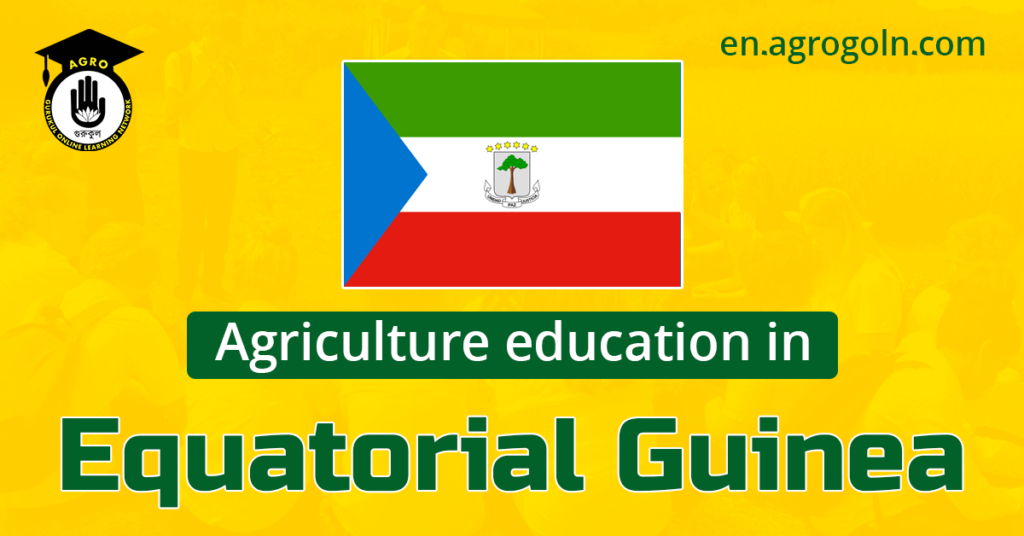Agricultural Education in Guinea, Located on the west coast of Africa, the Republic of Guinea is endowed with a vast potential for agricultural growth, thanks to its favorable climate, fertile soil, and abundant water resources. Agriculture is integral to the country’s economy, as a significant percentage of the population relies on farming for livelihood. However, for Guinea to fully harness this potential, robust agricultural education is essential. This article will delve into the history, current state, challenges, and future prospects of agricultural education in Guinea.
Agricultural Education in Guinea
Historical Context
Since achieving independence in 1958, Guinea has recognized the significance of agricultural education. During the initial years of independence, the country focused on rural self-sufficiency. This approach prioritized the establishment of cooperative farms and agricultural training centers to impart knowledge and improve the skills of the local farming community.
By the 1980s, the focus shifted towards formal education systems and the establishment of agricultural institutions at the secondary and tertiary levels. These were aimed at producing a new generation of agriculturists who would drive modernization and increased productivity.
Current State of Agricultural Education
1. Formal Education: Agricultural education in Guinea is a mix of formal institutions and vocational training programs:
- Secondary Level: There are agricultural technical schools that provide foundational knowledge in various agricultural sciences. Students learn about crop production, animal husbandry, forestry, and fisheries.
- Tertiary Level: Institutions such as the University of Conakry offer specialized courses in agriculture, providing degrees in agronomy, soil science, and other related fields.
2. Vocational Training: Apart from formal education, vocational training centers offer courses in practical farming techniques, machinery operations, and farm management. These centers play a pivotal role in ensuring that farmers, irrespective of their educational background, have access to the latest knowledge and best practices.
3. Extension Services: Extension services act as bridges between research institutions and farmers. These services are designed to bring the latest research findings and technologies to the grassroots level. In Guinea, agricultural extension officers regularly organize workshops, training sessions, and field demonstrations.
Challenges in Agricultural Education
1. Limited Resources: The most pressing challenge is the lack of resources. Many institutions face a shortage of funds, which hampers their ability to provide quality education. This has resulted in outdated curricula, inadequate infrastructure, and a scarcity of training materials.
2. Misalignment with Local Needs: There’s often a gap between what’s taught in educational institutions and the real-world challenges that farmers face. This disconnect results in graduates who are not adequately prepared to address the practical issues in the field.
3. Lack of Modern Technologies: Despite the global advancement in agricultural technology, many training institutions in Guinea are yet to integrate these advancements into their curriculum. As a result, students miss out on learning about cutting-edge tools and practices.
4. Insufficient Training of Trainers: For agricultural education to be effective, trainers themselves need regular training. Currently, there’s a deficiency in programs aimed at updating the skills and knowledge of educators and trainers.
Future Prospects and Recommendations
1. Strengthening Public-Private Partnerships: There’s a growing realization of the role the private sector can play in enhancing agricultural education. By fostering partnerships between educational institutions and private entities, there can be an infusion of resources, technology, and expertise.
2. Curriculum Revamp: It’s essential to periodically review and update the curriculum to ensure it remains relevant. Incorporating modern farming techniques, digital tools, and sustainable practices can make agricultural education more attuned to current needs.
3. Enhancing Extension Services: For agricultural innovations to reach farmers, extension services need to be bolstered. By increasing their reach and frequency, these services can ensure that even remote farmers benefit from the latest research.
4. International Collaborations: Tying up with international agricultural institutions can be beneficial. Such collaborations can lead to student and faculty exchange programs, shared research, and the introduction of globally accepted best practices.
5. Emphasizing Sustainable Farming: Given the global challenges of climate change, it’s crucial to integrate sustainable farming practices into the curriculum. This not only ensures environmental conservation but also makes farming more resilient and productive in the long run.
Conclusion
Agricultural education holds the key to unlocking Guinea’s vast farming potential. While challenges exist, they are not insurmountable. By addressing the current gaps and leveraging both national and international collaborations, Guinea can pave the way for a vibrant agricultural sector powered by knowledgeable and skilled farmers. Investing in agricultural education is not just an investment in the farming community; it’s an investment in the future of the nation.

